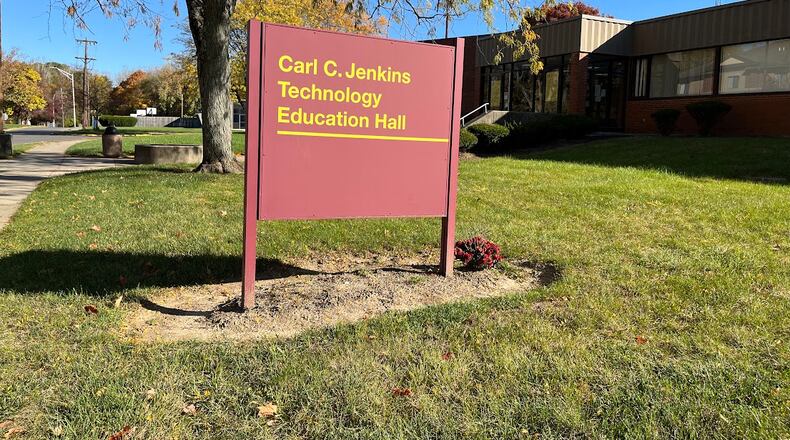In all, CSU leaders see substantial maintenance tasks that need attention. While a slide Kuti showed an audience during his address at the forum identified a total cost of $32.7 million, Kuti in his remarks pointed to a larger number for the work ahead.
“We identified in one day $39 million in deferred maintenance that we need to face, just to get our campus back,” he said. “So we’re working with the Ohio Department of Higher Education to try to get this next phase.”
In March, before Kuti took office, interim CSU president Alex Johnson said in a campus-wide email that the university faced a $4 million shortfall and layoffs were possible.
However, Kuti told listeners Thursday that “the future is very, very bright.” He spoke of his vision for a sprawling, 44-acre “research and demonstration complex” devoted to agricultural education, featuring labs, research facilities and areas to grow crops.
That vision will require public and private support, and the university hopes to have a storage facility for the complex operating by July 2025.
The university in recent weeks also celebrated its role in a national HBCU (Historically Black Colleges and Universities) consortium conducting semiconductor processing training and research, fueled by a three-year, $3 million grant from the National Science Foundation.
Mohammadreza Hadizadeh, director of Central State’s Semiconductor Education and Research program, will serve as the lead principal investigator for that effort.
Hadizadeh, a physics professor, told a group touring the university’s Carl C. Jenkins Technology Education Hall that it is CSU’s goal to build a semiconductor production clean room in the hall, if the university can find adequate support. He put the cost of the clean room envisioned at $4 million to $5 million.
Intel’s construction of dual chip fabrication plants near Columbus makes this kind of training urgent, Hadizadeh said.
“This is a field where there is a lack of the technical workforce at all the levels, from technician to engineer, from bachelor’s (degree) to PhD ... So we are working with partner universities in the state of Ohio, including Wright State, Ohio State, Cedarville University and Youngstown and Stark State,” he said.
The program has already helped create a “foundational lab” for training of workers at CSU, he said. State leaders have said they expect Intel’s $20 billion semiconductor manufacturing operation to employ 3,000 people with an average salary of around $135,000 when it is operational.
Hadizadeh told tourgoers of a new certificate and minor program for online students in this field, resulting in 30 credit-hours of training for CSU and non-CSU students.
“We have the support from Intel,” he said.
About the Author



